Jeokbyeokgang River (적벽강)
9.7Km 2021-02-01
697, Jeokbyeokgang-ro, Geumsan-gun, Chungcheongnam-do
+82-41-750-2371
The primary source of the Geumgang River is a spring located on Ddeunbong Peak in Subun-ri, Jangsu-gun, Jeollabuk-do, which flows to the north. At Changnam, it changes direction and enters Bangu-ri, Buri-myeon, Geumsan-gun. From here, the river flows through steep mountains. At Sutong-ri, the precipitous cliffs of a mountain named Jeokbyeok tower proudly above, and where the river runs under these steep cliffs it is called the Jeokbyeokgang River.
Jeokbyeok literally means "red walls" in Korean. The Geumgang River under Jeokbyeok is as calm as a peaceful lake with long sandy shores. This riverbank is alive with beautiful flowers in spring, green pine trees in summer, and in fall, the green gives way to an autumnal tint, until lovely snowscapes blanket the area in winter.
Yeongdong Yeongguksa Temple (영국사 (영동))
11.6Km 2022-12-27
225-35, Yeonggukdong-gil, Yeongdong-gun, Chungcheongbuk-do
+82-43-743-8843
Yeongguksa Temple is nestled at the foot of Cheontaesan Mountain (714.7 meters), at the boundary between Chungcheongbuk-do and Chungcheongnam-do. Visitors must trek through a valley to reach the temple, passing waterfalls and rocks.
The time of Yeongguksa Temple's construction is not clearly known but it is said to have been built around the late Silla period, during the time of King Seonjong. The temple prospered when the State Preceptor Wongak, who completed the Cheontae, one of Buddhist orders from Daegak Guksa Uicheon, came to the temple in the middle of the Goryeo period. It continued to flourish until the early Joseon era and then took a dive due to the rule of anti-Buddhism. Despite the situation at the time, the temple's reputation as one of the noted temples remained. However, the situation worsened in the early twentith century, to the point of near closure. The temple was reconstructed by Jubongjosa Monk in 1934.
As of now, the temple contains various treasures including the Stele for State Preceptor Wongak, Stupa of Yeongguksa Temple, Three-story Stone Pagoda of Yeongguksa Temple, Three-story Stone Pagoda at Mangtapbong Peak of Yeongguksa Temple. In addition, Bell-shaped Stupa and Round-shaped Stupa, regional tangible cultural assets, are situated in the temple site.
Nami Recreational Forest (남이자연휴양림)
11.9Km 2021-03-05
200, Neutigol-gil, Geumsan-gun, Chungcheongnam-do
+82-41-753-5706
Nami Recreational Forest is the perfect place for leisure activities and family outings. The forest boasts a picture-perfect view of thick, green forests of broadleaf trees, crystal clear water, curiously shaped rocks, and waterfalls. The cliffs and rocks of Daedunsan Mountain are visible from the summit of Seonyabong Peak.
Near the forest are diverse cultural heritage sites such as Baengnyeong Holy Ground and Yukbaekgoji Victory Tower. Nami Recreational Forest provides visitors with a unique combination of cultural sites and natural beauty, making it a popular destination among visitors.
Maninsan Recreational Forest (만인산 자연휴양림)
12.1Km 2023-02-09
106, Sannae-ro, Dong-gu, Daejeon
Maninsan Recreational Forest sits on the border between Daejeon and Geumsan-gun, Chungcheongnam-do, and is located approx. 17 kilometers away from Daejeon Station on National Route 17. It consists of Maninsan, the main peak, as well as Bongsuregol, Keunbaegol, and Jageunbaegol, and, because of its beautiful landscape, it even enshrined the figures of King Taejo and his princes during the Joseon Dynasty. Pure water constantly flows in the valleys and broadleaf trees form a thickly wooded forest. This recreational forest located close to the city has utilized natural ridges and is divided into the family recreation district, youth district, and picnic district to provide a pleasant resting area for citizens. Maninsan Service Area is a convenience facility of the recreational forest built with private capital in 1990 and, at the time of its construction, it utilized the natural valleys as they were without damaging any part of the forest. Decks were installed in the valleys, and the structure itself was built with one semi-underground floor and two ground floors. The main framework was made of reinforced concrete and wood was used as the primary material for construction. Also, a pond was created in front of the rest area to harmonize with the natural landscape. As a result, it is widely praised by experts as the most beautifully constructed rest area in Korea, and it is becoming a place that citizens frequently visit to relax. There are comfortable benches and resting spots situated throughout for visitors to relax while enjoying the views and, in particular, Manillugak is a symbolic recreational facility of Maninsan and a representative pavilion structure. It was built in the architectural style of Segeomjeong Pavilion located on Bugaksan in Seoul while employing reinforced concrete for the main framework. It applies a two-story, wooden tile roof to maintain as much beauty of Korean traditional architecture as possible with the consideration of maintenance.
Garden of Sky (하늘물빛정원)
13.7Km 2024-06-03
156 Geomhan 1-gil, Chubu-myeon, Geumsan-gun, Chungcheongnam-do
A garden filled with wild flowers, exotic plants, and rare trees, Garden of Sky is nestled by Jangsanhosu Pond located at the foothills of Meodeullyeong Pass. The garden also has a wide variety of facilities that cater to visitors' convenience and needs such as a jjimjilbang (Korean sauna), seminar rooms, restaurants, herbal souvenir shop, cafes local food stores, forests, and photo zones.
Yetteo Folk Museum (옛터민속박물관)
13.9Km 2025-02-04
321-35 Sannae-ro, Dong-gu, Daejeon
The Yetteo Folk Museum showcases traditional folk artifacts that reflect the daily life of the Daejeon region. Inside the exhibition hall, visitors can view items such as knives, tray tables, water droppers, cups, and oil lamps. The outdoor exhibition area features stone mortars, troughs, and grinding stones. The museum also includes a traditional jar exhibition hall, a Korean restaurant, and a traditional teahouse. Visitors can engage in hands-on experiences like natural dyeing, hanji paper crafts, and knot-making, or relax and enjoy a campfire.
Daedunsan Recreational Forest (대둔산자연휴양림)
14.1Km 2020-11-18
6, Daedunsan-ro, Geumsan-gun, Chungcheongnam-do
+82-41-753-4242
Daedunsan Recreational Forest contains deep valleys and magnificent peaks. The new-growth forest on the lower half of the mountain is in perfect harmony with its idyllic surroundings. Nearby tourist attractions include Daedunsan Provincial Park, Taegosa Temple, and a battlefield from the Imjin War (1592-1598).
Yeongdong Bidangang Forest Village (영동 비단강숲마을)
14.4Km 2025-01-14
20-27, Sudu 1-gil, Yangsan-myeon, Yeongdong-gun, Chungcheongbuk-do
+82-43-745-5432
Yeongdong Bidangang Forest Village is a pure farming village which was at the historical border between the Silla and Baekje kingdoms. Also located nearby is Yeongguksa Temple, where King Gongmin escaped from the Red Turban troops during the Goryeo period.
Created by the Geumgang River that flows like silk around Bonghwasan Mountain, the village is surrounded by breathtaking scenery, keeping Mother Nature clean so organisms including marsh snails and mandarin fish can live.
In the village, plenty of hands-on activities such as catching snails in the crystalline water like a treasure hunter and riding a tandem
bike are available to make a valuable memory. Not only these activities, visitors can also take a rest within the ambience of Bidangang River and pick sweet potatoes and grapes, giving the pleasure of harvesting. Other programs including making a wooden doorplate, wine foot-bathing, flying a pungdeung (lantern), and herb soap-making are offered.
Muju Rafting (무주래프팅)
14.7Km 2024-04-07
5-11, Jamdu-gil, Muju-gun, Jeonbuk-do
+82-63-322-7745
Muju Rafting resort is located on the upper Geumgang River and offers rafting, survival game, hiking, and fishing programs. The area is over 9,900 ㎡ in size and can accommodate lodging for up to 200 guests.
Daedunsan Provincial Park (Geumsan Section) (대둔산도립공원 (금산))
14.8Km 2025-01-13
2, Daedunsan-ro, Geumsan-gun, Chungcheongnam-do
+82-41-750-3411
While the Wanju section of Daedunsan Provincial Park is more developed and rather larger than the Geumsan section, Geumsan has the distiction of being home to Taegosa Temple, the most important hertiage of the mountain. Daedunsan Mountain features many unique rock formations and small peaks with a clean environment. There are lush forests and beautiful valleys that turn crimson with the arrival of fall. Additional attractions of the park include a battlefield from the Imjin War (1592-1598), and Seokmun Gate, a stone gate before Taegosa Temple.
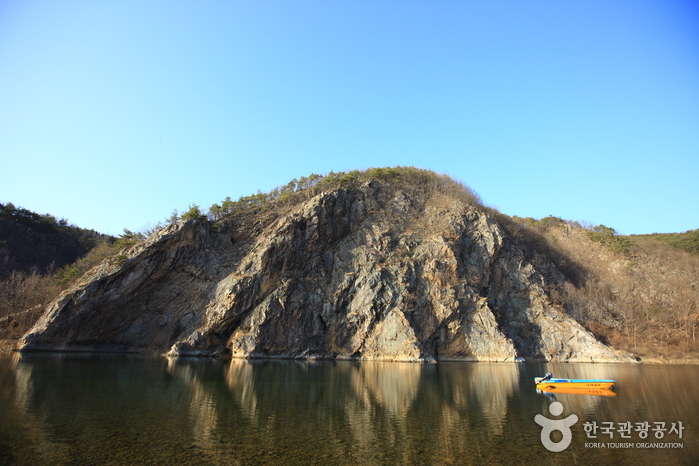
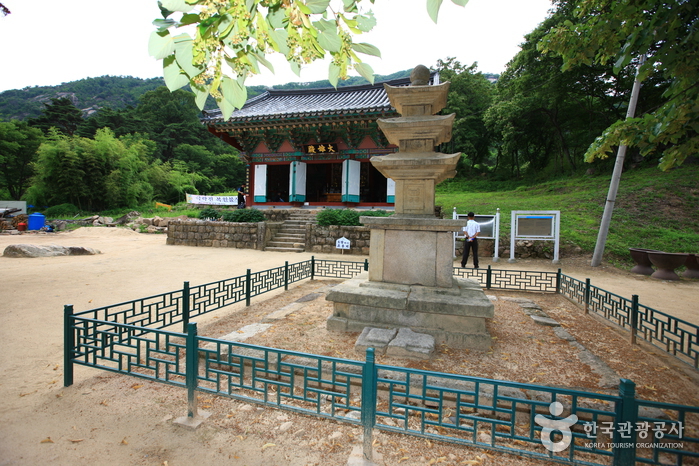
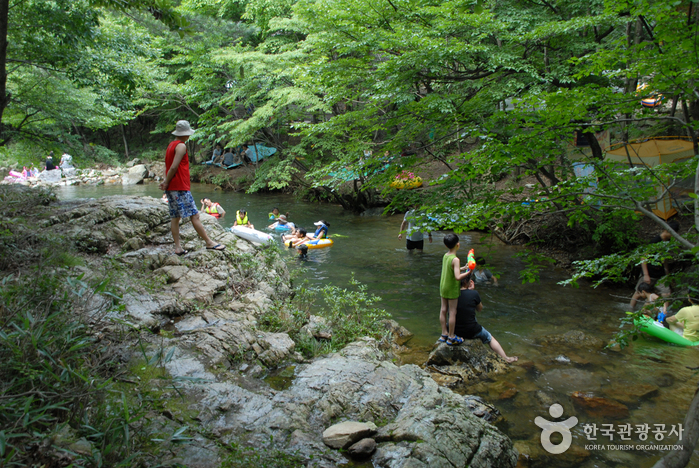

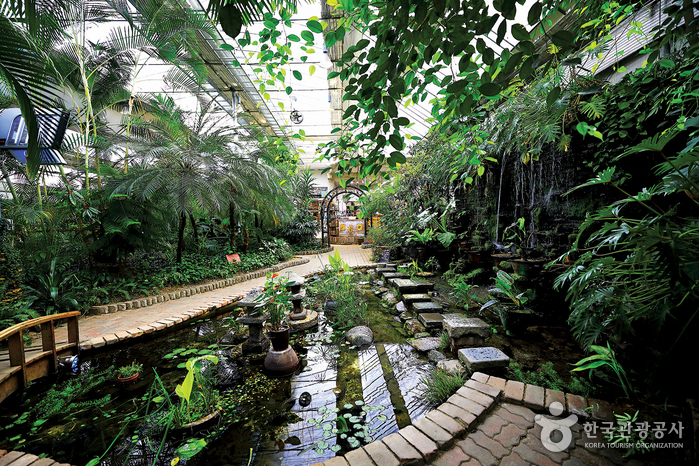
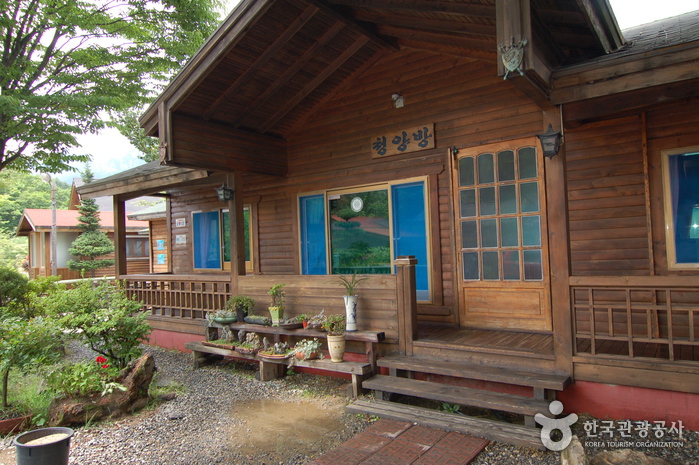
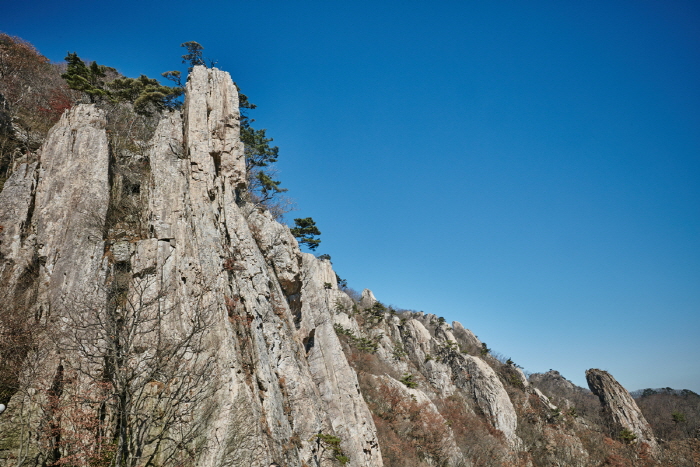
 English
English
 한국어
한국어 日本語
日本語 中文(简体)
中文(简体) Deutsch
Deutsch Français
Français Español
Español Русский
Русский